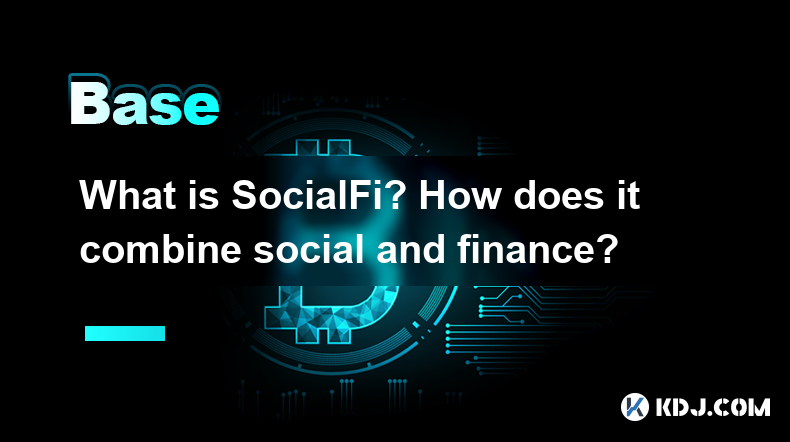-
 Bitcoin
Bitcoin $84,202.5564
-0.02% -
 Ethereum
Ethereum $2,223.2601
-2.41% -
 Tether USDt
Tether USDt $0.9993
0.08% -
 XRP
XRP $2.1472
-1.85% -
 BNB
BNB $584.9610
-3.16% -
 Solana
Solana $147.7687
7.81% -
 USDC
USDC $0.9998
-0.01% -
 Dogecoin
Dogecoin $0.2016
-1.95% -
 Cardano
Cardano $0.6313
-1.43% -
 TRON
TRON $0.2313
1.87% -
 Litecoin
Litecoin $127.7212
0.38% -
 Chainlink
Chainlink $14.7504
-2.28% -
 Avalanche
Avalanche $22.1300
-1.78% -
 Hedera
Hedera $0.2146
8.31% -
 Sui
Sui $2.8398
1.24% -
 Stellar
Stellar $0.2857
1.74% -
 UNUS SED LEO
UNUS SED LEO $9.2844
0.60% -
 Toncoin
Toncoin $3.3386
-1.41% -
 Shiba Inu
Shiba Inu $0.0...01392
-3.25% -
 MANTRA
MANTRA $7.5680
2.25% -
 Polkadot
Polkadot $4.7121
-3.63% -
 Hyperliquid
Hyperliquid $19.7955
-4.05% -
 Bitcoin Cash
Bitcoin Cash $317.2154
7.54% -
 Ethena USDe
Ethena USDe $0.9984
-0.05% -
 Dai
Dai $0.9997
0.00% -
 Bitget Token
Bitget Token $4.0254
-2.21% -
 Uniswap
Uniswap $7.4809
-4.29% -
 Monero
Monero $213.0770
2.07% -
 Aptos
Aptos $6.4428
6.12% -
 NEAR Protocol
NEAR Protocol $3.0874
0.93%
What is asset on-chain? What is the role of asset on-chain?
On-chain assets, recorded directly on a blockchain's ledger, offer transparent, immutable ownership verification, crucial for DeFi and dApps, unlike off-chain assets vulnerable to manipulation.
Mar 01, 2025 at 02:36 am

Key Points:
- On-chain assets represent digital assets whose existence and transactions are recorded directly on a blockchain's public ledger.
- The primary role of on-chain assets is to provide transparency, immutability, and verifiability to asset ownership and transactions.
- Different types of on-chain assets exist, each with its own characteristics and use cases.
- On-chain assets are crucial for various decentralized applications (dApps) and DeFi protocols.
- Understanding on-chain asset management is vital for navigating the complexities of the crypto ecosystem.
What is Asset On-Chain?
The term "asset on-chain" refers to any digital asset whose ownership, transfer, and other relevant details are recorded directly on a blockchain's distributed ledger. Unlike assets held off-chain (e.g., in a centralized database), on-chain assets benefit from the inherent security and transparency of blockchain technology. This means that all transactions involving the asset are publicly auditable and tamper-proof. The blockchain itself acts as the immutable record of ownership.
What forms can on-chain assets take?
On-chain assets encompass a wide variety of digital entities. The most common examples include cryptocurrencies like Bitcoin and Ethereum. However, the concept extends far beyond simple tokens. Non-fungible tokens (NFTs), representing unique digital or physical assets, are a prime example. Furthermore, fractionalized ownership of real-world assets, such as real estate or artwork, can also be represented as on-chain assets.
How does on-chain asset management differ from off-chain methods?
The fundamental difference lies in the location of the asset's record. Off-chain asset management relies on centralized databases controlled by a single entity. This introduces potential vulnerabilities such as single points of failure, data manipulation, and censorship. In contrast, on-chain asset management leverages the decentralized and transparent nature of blockchain. This ensures immutability, enhanced security, and increased trust among participants.
What are the key advantages of using on-chain assets?
The benefits of using on-chain assets are numerous. Firstly, the transparency offered by the public ledger allows anyone to verify ownership and transaction history. Secondly, immutability prevents unauthorized alterations of the asset's record. Thirdly, the decentralized nature of blockchain eliminates single points of failure and reduces the risk of censorship or manipulation. Finally, the inherent security of cryptographic methods protects the asset from unauthorized access.
What are the limitations of on-chain assets?
While on-chain assets offer significant advantages, they also have limitations. Scalability can be a challenge, as the processing of numerous transactions can strain the blockchain's capacity. Transaction fees, also known as gas fees, can be substantial, particularly during periods of high network congestion. Furthermore, the public nature of the blockchain means that asset ownership is transparent to everyone, which might not be desirable in all cases.
What is the role of asset on-chain?
The primary role of on-chain assets is to enhance the security, transparency, and verifiability of digital assets. This facilitates trust and enables the creation of new financial instruments and decentralized applications (dApps). They are foundational to many aspects of the decentralized finance (DeFi) ecosystem.
How are on-chain assets used in DeFi?
On-chain assets are the lifeblood of decentralized finance. They are used in various DeFi protocols, including lending and borrowing platforms, decentralized exchanges (DEXs), and yield farming opportunities. For example, users can lend their on-chain assets to earn interest or use them as collateral for loans. They can also trade them on DEXs without the need for intermediaries.
What are some examples of on-chain asset applications?
- Cryptocurrencies: Bitcoin, Ethereum, and other cryptocurrencies are the most basic examples of on-chain assets. Their transactions are directly recorded and verified on the blockchain.
- NFTs: Non-fungible tokens represent unique digital or physical assets, such as artwork, collectibles, or in-game items. Their ownership is verifiable on the blockchain.
- Tokenized Securities: Traditional assets like stocks or bonds can be tokenized and represented as on-chain assets, enabling fractional ownership and streamlined trading.
- Stablecoins: These cryptocurrencies are pegged to a stable asset like the US dollar, providing price stability within the volatile crypto market. Their value is tracked on-chain.
How to manage on-chain assets securely?
Securely managing on-chain assets requires careful attention to several factors.
- Use strong, unique passwords and secure your private keys. Never share your private keys with anyone.
- Employ a reputable hardware wallet. Hardware wallets offer a high level of security by storing your private keys offline.
- Regularly update your software and firmware. Keep your wallets and software updated to benefit from the latest security patches.
- Be cautious of phishing scams and malicious websites. Verify the legitimacy of websites and applications before interacting with them.
- Diversify your assets. Don't put all your eggs in one basket. Spread your investments across different assets to mitigate risk.
Frequently Asked Questions:
Q: Are all assets on the blockchain on-chain assets?
A: No, not all assets associated with a blockchain are on-chain. Metadata about assets might be stored off-chain, even if the asset itself is represented on-chain. The crucial aspect is whether the asset's ownership and transactions are recorded directly on the blockchain's public ledger.
Q: What is the difference between on-chain and off-chain data?
A: On-chain data is permanently recorded and verified on the blockchain, making it immutable and transparent. Off-chain data is stored outside the blockchain, potentially making it susceptible to manipulation or loss.
Q: Is it possible to move assets from off-chain to on-chain?
A: Yes, the process of tokenization allows for the representation of off-chain assets on a blockchain, effectively moving them "on-chain". This requires a secure and verifiable process to link the off-chain asset to its on-chain representation.
Q: What are the security risks associated with on-chain assets?
A: While blockchain technology offers inherent security, vulnerabilities can still exist. These include private key loss, phishing attacks, smart contract vulnerabilities, and exchange hacks. Diligence and proper security practices are crucial.
Q: How can I track my on-chain assets?
A: You can track your on-chain assets using blockchain explorers. These platforms allow you to view transaction history, balances, and other relevant information about your assets on the specific blockchain. Your wallet will also show your balances.
Disclaimer:info@kdj.com
The information provided is not trading advice. kdj.com does not assume any responsibility for any investments made based on the information provided in this article. Cryptocurrencies are highly volatile and it is highly recommended that you invest with caution after thorough research!
If you believe that the content used on this website infringes your copyright, please contact us immediately (info@kdj.com) and we will delete it promptly.
- On Feb 24–25, 2025, the crypto market faced a sharp downturn
- 2025-03-01 05:25:34
- StratoVM ($SVM) Aims to Revolutionize Bitcoin With New L2 Platform
- 2025-03-01 05:25:34
- Coldware (COLD) Emerges as a Strongest Contender in Crypto
- 2025-03-01 05:25:34
- The crypto market is in a bloodbath, but Polymarket is not.
- 2025-03-01 05:25:34
- Bitcoin Has Dropped 26% From This Cycle's All-Time High, Pushing Market Sentiment Into "Extreme Fear"
- 2025-03-01 05:25:34
- Pi Coin Emerges as a Formidable Contender, Challenging Bitcoin
- 2025-03-01 05:25:34
Related knowledge

What is asset on-chain? What is the role of asset on-chain?
Mar 01,2025 at 02:36am
Key Points:On-chain assets represent digital assets whose existence and transactions are recorded directly on a blockchain's public ledger.The primary role of on-chain assets is to provide transparency, immutability, and verifiability to asset ownership and transactions.Different types of on-chain assets exist, each with its own characteristics and use ...

What is multi-signature? What is the function of multi-signature?
Mar 01,2025 at 03:08am
Key Points:Multi-signature (multisig) is a cryptographic method requiring multiple private keys to authorize a single transaction.Multisig enhances security by mitigating the risk of single points of failure, like losing a private key.Multisig wallets are used for various purposes, including securing large amounts of cryptocurrency, managing shared fund...

What is NFT? Why is NFT so popular?
Mar 01,2025 at 05:36am
Key Points:NFTs (Non-Fungible Tokens) are unique, indivisible digital assets representing ownership of something. This "something" can be anything from digital art and collectibles to in-game items and virtual real estate.NFT popularity stems from several factors including scarcity, verifiable ownership, and the ability to build communities around share...

What is a public offering? What is the difference between a public offering and a private placement?
Mar 01,2025 at 05:48am
Key Points:Public offerings (POs) and private placements (PPs) are two distinct methods for companies to raise capital.POs involve selling securities to the general public through regulated exchanges, while PPs involve selling securities to a limited number of accredited investors.POs offer greater liquidity but require more stringent regulatory complia...

What is SocialFi? How does it combine social and finance?
Mar 01,2025 at 04:31am
Key Points:SocialFi leverages blockchain technology to integrate social media functionalities with decentralized finance (DeFi) applications.It aims to reward users for their social activities, creating a tokenized economy within social platforms.SocialFi projects utilize various blockchain mechanisms, including NFTs and governance tokens, to enhance us...

What is a paper wallet? How does it work?
Mar 01,2025 at 01:24am
Key Points:A paper wallet is a physical representation of your cryptocurrency private and public keys.It's created offline, enhancing security against online threats like malware and hacking.Functionality involves generating keys offline, printing them, and using them to send and receive crypto.Security relies heavily on safe storage and handling of the...

What is asset on-chain? What is the role of asset on-chain?
Mar 01,2025 at 02:36am
Key Points:On-chain assets represent digital assets whose existence and transactions are recorded directly on a blockchain's public ledger.The primary role of on-chain assets is to provide transparency, immutability, and verifiability to asset ownership and transactions.Different types of on-chain assets exist, each with its own characteristics and use ...

What is multi-signature? What is the function of multi-signature?
Mar 01,2025 at 03:08am
Key Points:Multi-signature (multisig) is a cryptographic method requiring multiple private keys to authorize a single transaction.Multisig enhances security by mitigating the risk of single points of failure, like losing a private key.Multisig wallets are used for various purposes, including securing large amounts of cryptocurrency, managing shared fund...

What is NFT? Why is NFT so popular?
Mar 01,2025 at 05:36am
Key Points:NFTs (Non-Fungible Tokens) are unique, indivisible digital assets representing ownership of something. This "something" can be anything from digital art and collectibles to in-game items and virtual real estate.NFT popularity stems from several factors including scarcity, verifiable ownership, and the ability to build communities around share...

What is a public offering? What is the difference between a public offering and a private placement?
Mar 01,2025 at 05:48am
Key Points:Public offerings (POs) and private placements (PPs) are two distinct methods for companies to raise capital.POs involve selling securities to the general public through regulated exchanges, while PPs involve selling securities to a limited number of accredited investors.POs offer greater liquidity but require more stringent regulatory complia...

What is SocialFi? How does it combine social and finance?
Mar 01,2025 at 04:31am
Key Points:SocialFi leverages blockchain technology to integrate social media functionalities with decentralized finance (DeFi) applications.It aims to reward users for their social activities, creating a tokenized economy within social platforms.SocialFi projects utilize various blockchain mechanisms, including NFTs and governance tokens, to enhance us...

What is a paper wallet? How does it work?
Mar 01,2025 at 01:24am
Key Points:A paper wallet is a physical representation of your cryptocurrency private and public keys.It's created offline, enhancing security against online threats like malware and hacking.Functionality involves generating keys offline, printing them, and using them to send and receive crypto.Security relies heavily on safe storage and handling of the...
See all articles

















































































